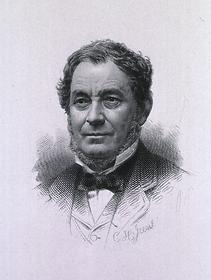Technologies
Key accomplishments: toxicology
1702
Richard Mead's A Mechanical Account of Poisons in Several Essays is the first book in English devoted entirely to the discussion of poisons.
1752
The Mary Blandy case in England is the first reported use of chemical tests to detect arsenic in a legal trial.
1814
In France, Mathieu Orfila's Traité des Poisons is the first book devoted entirely to the subject of toxicology. Orfila popularizes the word "toxicology."
1836
English chemist James Marsh devises a test for identifying trace amounts of arsenic.
1851
Belgian chemist Jean-Servais Stas develops a method for detecting vegetable alkaloid poisons (caffeine, quinine, morphine, strychnine, atropine, opium) in dead bodies.
1860
With the aid of the spectroscope, which they invented in 1859, German chemist Robert Bunsen and physicist Gustav Kirchhoff discover that vaporizing a substance creates a unique "signature" spectrum, which can be used to identify it. Using the spectroscope, in 1860, Bunsen and Kirchhoff discover two new alkali metals—cesium and rubidium.
1906
Italian-born Russian botanist Mikhail Tswett invents paper chromatography, initially to study the make-up of plant proteins such as chlorophyll.
1926
Swedish chemist Theodor Svedberg builds the first ultracentrifuge—a machine that separates particles by mass—making it possible to determine precisely the molecular weights of highly complex proteins. Svedberg wins the Nobel Prize for Chemistry in 1926 for his invention of the ultracentrifuge and studies in the chemistry of colloids.
1941
The Beckman model DU spectrophotometer is the first instrument to probe the ultraviolet region with high precision and accuracy. According to Bruce Merrifield, Nobel Laureate in chemistry, the DU is "probably the most important instrument ever developed in the advancement of bioscience."
1948
During the 1920s and 1930s, Swedish chemist Arne Tiselius helps develop and improve electrophoresis and analysis by adsorption. In 1948, he receives the Nobel Prize in Chemistry for his work.
1950s
Ultraviolet and infrared spectrometry, X-ray diffraction, and paper chromatography are applied to forensic science.
1952
British biochemists Archer J. P. Martin and Richard L. M. Synge demonstrate partition chromatography to the Biochemical Society at a 1941 meeting in London. They share the Nobel Prize in Chemistry in 1952 for their development of partition chromatography.
1953
The first commercial gas chromatograph is manufactured.
1966
Fourier-transformed infrared spectroscopy (FTIR), a technique that measures various infrared wavelengths, and atomic absorption spectroscopy, which uses the absorption of light to measure the concentration of gas-phase atoms, are invented.
